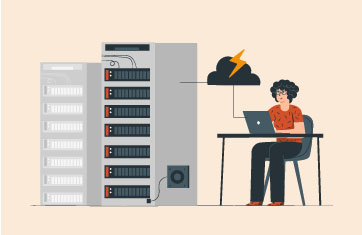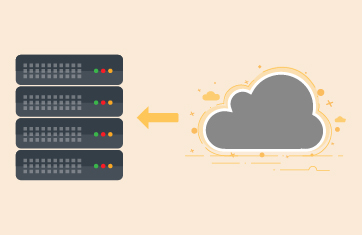What is Supercloud?
In recent months the term “Supercloud” has become increasingly used, particularly in the context of being a successor or qualifier to “multi-cloud”. There isn’t any definitive formal definition, it is essentially yet another buzzword and vendors and analysts are pilling in with their own take and definition to align to their own agendas and product capabilities. In this slightly wild west grab for audience though usage of the term is converging towards some key concepts and some open-source community and government initiatives (particularly in Asia) are underway that are likely to lead to practical adoption on new workflows and computing architectures falling under this umbrella term of “Supercloud”.
What is hybrid cloud and what is multi-cloud?
To understand Supercloud you first have to understand hybrid cloud and multi-cloud, their implementation, limitations and what is implemented in practice. Cloud is often coined as running your application “on someone else’s computer”.
Hybrid cloud – An overview
Hybrid cloud is how many enterprises first start with cloud. Traditionally, organizations bought and ran their own infrastructure on-premises, they bought servers installed operating systems and applications on those servers and were responsible for updating and maintaining everything – both software and hardware.
 Hybrid cloud is the practice of running some (but only _some_ – not all) of what could be on-premises on someone else’s computers usually in cloud, and usually a big public cloud such as AWS (Amazon Web Services), whilst retaining some of your workloads on-prem. In practice this could mean rather than buying a new Dell Server and installing Microsoft SQL Server to run databases that an organization rents virtual servers as VMs from Azure and installs / maintains SQL server as they do on-prem (IaaS), or it could mean they use an Azure Managed SQL (PaaS) instance where Microsoft are also responsible for maintaining the SQL software.
Hybrid cloud is the practice of running some (but only _some_ – not all) of what could be on-premises on someone else’s computers usually in cloud, and usually a big public cloud such as AWS (Amazon Web Services), whilst retaining some of your workloads on-prem. In practice this could mean rather than buying a new Dell Server and installing Microsoft SQL Server to run databases that an organization rents virtual servers as VMs from Azure and installs / maintains SQL server as they do on-prem (IaaS), or it could mean they use an Azure Managed SQL (PaaS) instance where Microsoft are also responsible for maintaining the SQL software.
Whereas Cloud is often coined as running “your applications on someone else’s computer”, hybrid cloud is about running “only some of your applications on somebody else’s computer”.
Multi-cloud – An overview
Multi-cloud is when an organization uses 2 or more different public cloud providers.
A number of very different scenarios come up with multi-cloud that help clarify what it actually means, consider:

Whereas cloud is often coined as running your application “on someone else’s computer”, multi-cloud is about running your application “on lots of other people’s computers” or “choosing which person’s computer to run your application on from lots of people offering to rent out their computers”.
The examples I’ve given highlight some points:
- Some of the scenarios above are around resilience and disaster recovery and multi-cloud genuinely offers solutions to ensure the highest possible availability.
- Example B) is becoming increasingly common with the adoption of containers and microservices. Applications may rely on lots of different services in different clouds and a failure in a single cloud can often cause the failure of the end-to-end service. Whilst multi-cloud is often talked about as a way to improve resilience, many actual implementations are exposing the application to a higher failure risk.
- Example A) isn’t currently feasible – lifting and shifting desktops between clouds just isn’t possible, a lot of workloads are very hard to migrate. Beyond this Microsoft’s licensing conditions and pricing make Windows on clouds other than Azure more complex.
- A significant incentive to use multi-cloud is pricing, if you have the freedom to choose and move in a competitive market that in theory means you will get the best value. This is a significant driver in most government led cloud initiatives. In practice cloud vendors are quite keen to retain customers and the best prices are often only accessible on longer term subscriptions.
- Interest in multi-cloud is being fueled by customers increasingly aware of high-impact and high-profile cloud outages and so people are looking to not “put all their eggs in one basket”.
Multi-region vs Multi-cloud
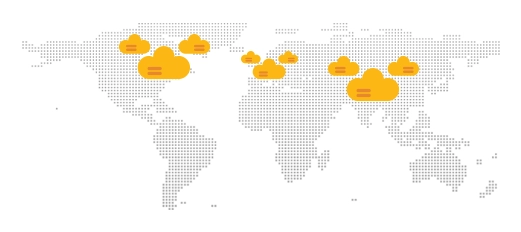 A slight aside now, for some customers their needs may be met by a multi-region deployment on a single vendor’s cloud. And multi-cloud may not in fact offer some of the perceived resilience many assume it does. A recent fire followed by “water intrusion“ into a Paris data center led to a multi-zone, whole region failure of the Google GCP cloud. A lengthy and interesting discussion on LinkedIn followed that raises many relevant points: https://www.linkedin.com/feed/update/urn:li:activity:7057361927856902144?updateEntityUrn=urn%3Ali%3Afs_feedUpdate%3A%28V2%2Curn%3Ali%3Aactivity%3A7057361927856902144%29.
A slight aside now, for some customers their needs may be met by a multi-region deployment on a single vendor’s cloud. And multi-cloud may not in fact offer some of the perceived resilience many assume it does. A recent fire followed by “water intrusion“ into a Paris data center led to a multi-zone, whole region failure of the Google GCP cloud. A lengthy and interesting discussion on LinkedIn followed that raises many relevant points: https://www.linkedin.com/feed/update/urn:li:activity:7057361927856902144?updateEntityUrn=urn%3Ali%3Afs_feedUpdate%3A%28V2%2Curn%3Ali%3Aactivity%3A7057361927856902144%29.
In short:
- Cloud regions are designed to be as independent as possible by individual cloud providers so the majority of outages can be avoided by fallback to a neighboring region. In practice, this is far easier in the USA where neighboring regions are still in the same country – with GDPR and similar local data control regulations in some countries in Europe this is more problematic.
- The big cloud providers do leverage third party datacenters, sometimes the _same_ ones – so using a different cloud provider may offer you little if no protection against a physical geographic incident such as a terrorist event, datacenter fire or earthquake. Using a “different” cloud may mean you are simply using servers in the next room.
What is Supercloud? The new buzzword?
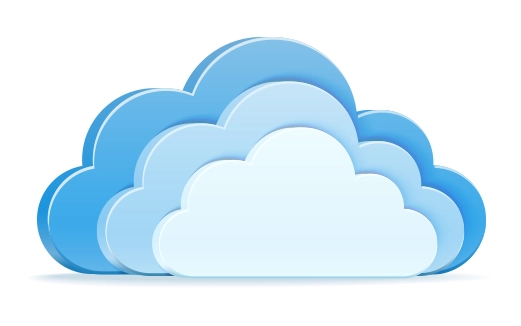 Supercloud is now the latest buzzword and concept to aid multi-cloud. If we could move workloads and applications between clouds and on and off on-prem easily and quickly and change our cloud of choice, it would be a utopia for high-availability and cost-optimization.
Supercloud is now the latest buzzword and concept to aid multi-cloud. If we could move workloads and applications between clouds and on and off on-prem easily and quickly and change our cloud of choice, it would be a utopia for high-availability and cost-optimization.
The widely used description of “Supercloud” is starting to converge on referring to technologies that use multiple clouds but abstract the end users from the specifics of a cloud provider. The idea that you could run your applications or workloads on the “Supercloud”, and it would take care of running the applications on GCP or Azure or AWS and so on for you.
The term was actually first coined back in 2016, by a research group at Cornell University, you can read their definition, here: Supercloud (cornell.edu). The key paragraph is:
“Supercloud is a cloud architecture that enables application migration as a service across different availability zones or cloud providers. The Supercloud provides interfaces to allocate, migrate, and terminate resources such as virtual machines and storage and presents a homogeneous network to tie these resources together. The Supercloud can span across all major public cloud providers such as Amazon EC2, Microsoft Azure, Google Compute Engine, and Rackspace etc., as well as private clouds. Supercloud users have the freedom to re-locate VMs to many data centers across the world, irrespective of owner and without having to implement complex re-configuration and state re-synchronization in their applications. Using the Supercloud, an application can easily offload from an overloaded data center to another one with a different infrastructure.”
i.e., the original “definition” was applied to an experimental implementation associated with VMs.
A recent and broad description was given by SiliconANGLE Analyst Dave Vellante, last year:
“We used the term supercloud to describe an abstraction layer that resides above and across hyperscale infrastructure, connects on-premises workloads and eventually stretches to the edge. Our premise is that supercloud goes beyond running services in native mode on each individual cloud. Rather, supercloud hides the underlying primitives and application programming interfaces of the respective cloud vendors and creates a new connection layer across locations.” (Source: Supercloud is becoming a thing – SiliconANGLE).
If Supercloud was a thing, it would make doing multi-cloud extremely easy. As a result, you’ll find many articles discussing how Supercloud will accelerate multi-cloud adoption, such as:
- Multicloud isn’t working: Bring on the supercloud! | VentureBeat
- Here comes the supercloud: What does it mean for multi-cloud complexity? (cloudcomputing-news.net)
- Supercloud: The 2022 Answer to Multi-Cloud Challenges | Network Computing
- The Rise of Superclouds: Abstracting the Multicloud’s Underlying Complexities | CDOTrends and Rise of the Superclouds – Open Sourcerers
- “Moving workloads seamlessly between clouds will help enterprises realize the full benefits of hybrid multicloud” – What is Supercloud? – Interconnections – The Equinix Blog
Vellante’s Supercloud definition encompasses on-premises and hybrid (on-prem mixed with cloud) – and indeed for cost and / or data compliance reasons on-prem will always be necessary alongside any multicloud strategy for some users. See: On-premises, Cloud First or Cloud Repatriation – What’s the Trend? Which is Best? | eG Innovations.
Single-pane procurement, compliance and tooling for the “Supercloud”
The technical ability of the ability to shift workloads from one cloud platform is a “will it work” question – to actually integrate this type of pick-and-mix, lift-and-shift methodology requires a lot of associated business processes to move in parallel to the workload, organizations have to consider:
- Data protection and compliance – many businesses have customers with “data must not leave the country” requirements. Especially in smaller countries you may not have multiple vendor offerings. Additionally, many organizations have to verify and do due diligence on their suppliers and supply chains.
- Accounting and finance processes. Changing cloud suppliers impacts on finance processes and the ability to switch cloud supplier and how quickly that can be done can be dictated by payment processes, sign-off and technologies. Monitoring and comparing cloud supplier offerings is difficult as pricing and availability can change rapidly, and many services and offerings have no direct equivalent in competing clouds. Additionally, clouds often only provide the best pricing on long-term subscription options which are contrary to the concept of the Supercloud.
- Software licensing – it is often very complex to move licenses and software companies aren’t always enthusiastic about assisting customers move easily to their competitors.
Government attempts to engineer a Supercloud or encourage multi-cloud usage
Governments and public sector organizations are very keen to adopt strategies that avoid vendor lock-in and offer the best value and accountability. No government wants to be reliant on a single commercial vendor for what is now critical infrastructure, so naturally many have been very keen to encourage multi-cloud strategies.
Multi-cloud uptake by governmental organizations in Singapore has been significant because of the country’s Government on Commercial Cloud (GCC) framework initiative. The “cloud agnostic” GCC platform enables agencies to use cloud service providers such as Amazon Web Services (AWS), and currently hosts over 600 government digital services. So far, government agencies across Singapore have collectively migrated close to 60 percent of workloads to the commercial cloud, and are on track to achieving their target of 70 percent in 2023.
An important facilitator in Singapore was the introduction of a national online ID system Singpass, now over 20 years old the system has been a significant factor in Singapore’s high rates of cloud adoption (see here for details).
In other countries there are programs that are attempting to make vendor choice and multi-cloud more feasible with buying frameworks or encouraging standardization that assist multi-cloud usage, for example:
- The UK government encourages cloud usage and vendor competition via its G-Cloud 13 program.
- In the Netherlands, the government backed DigiD scheme provides an online identify that can be used to standardize access to government and health websites and online services. Allowing developers to abstract identify and authentication in a multi-cloud strategy.
Of course, regardless of whether multi-cloud makes sense technically and financially (back to the debate in: Do you actually need a multi-cloud strategy? (kruschecompany.com)), once Governments start recommending or mandating their suppliers are Multicloud this can become an artificial driver.
For some customers there are good arguments that with a good hybrid cloud policy in place, multi-cloud adds complexity and cost with no substantial additional benefits. Especially as in certain small countries and cloud regions – the choice between the large public clouds is actually a choice between two neighboring rooms in the same third-party datacenter, hardly the Tsunami / Earthquake proof contingency some assume.
Supercloud – the lowest common denominator?
There are many that argue that a Supercloud ethos naturally leads to a race to the bottom and may slow innovation. Even the big public Clouds have their niches, which is why we see multi-cloud applications and services with different microservices spread across different vendor clouds (see: Monitoring and Troubleshooting Multi-cloud Infrastructures (eginnovations.com) for examples of such architectures). Google has a reputation and history for search and geographical and mapping data. Azure offers some extra benefits to those with a strong Microsoft focus and AWS has certain strengths for DevOps. Regional availability and the sizing and specifications of instances can vary significantly, as can graphical protocol capabilities and GPU support.
Each cloud has its own APIs and integration mechanisms so for any software platform looking to act as the Supercloud abstraction layer that means continual catch up on multiple API integrations and naturally a tendency to go for the common elements, the similar services and also the mass market demand.
Is VMware a “Supercloud”?

One vendor that has gone all in on the Supercloud message is VMware. For decades VMware and Citrix built hypervisors and platforms that abstracted applications from the underlying hardware and infrastructure. According to the original definition by the Cornell researchers and similar to those researchers’ original proposed implementation many of VMware’s services and products could be called “Superclouds”. Nowadays, VMware provides platforms which under-the-hood integrate into multiple clouds such as Azure and AWS. Moreover, VMware takes care of the individual integrations and the billing and licensing issues. You can read more about VMware and their take on Supercloud:
- Why a Supercloud Architecture is the Ticket to the Next Level ‑ VMware News and Stories
- Supercloud and the Era of Multi-Cloud Services | Office of the CTO Blog (vmware.com)
- They have some rather nice short discussion / podcast type material, see: Industry Experts Share What’s Next with Supercloud and Multi-Cloud – CIO Exchange (vmware.com)
VMware are doing the work to integrate with the public clouds, optimizing and tailoring their API usage and have a vested interest to optimize the resource usage and costs as it will affect their bottom line.
So that’s great but the elephant in the room is that VMware is a single proprietary vendor, rely on them for multi-cloud AWS and Azure etc. And you’ve locked in at a different point in the stack. Will we then be debating “multi-Supercloud” next year?
Other vendors with elements of “Supercloud”
Other modern products and cloud services built with a cloud agnostic and multi-cloud approach are also gaining popularity, such as the Snowflake Database – see Snowflake Monitoring and Performance Management. Update May 2024: More on Snowflake and how it is taking a designed for Supercloud approach: Supercloud: The race is on, and Snowflake is the front-runner | by Alexander Jaballah | Medium.
Container and orchestration technologies designed for modern cloud native apps, such as Docker and Kubernetes naturally lend themselves to association with the “Supercloud” ethos. Again, although whilst Kubernetes is a cloud-agnostic framework, practical implementation comes associated with cloud specific constraints and to switch between using implementations such as Amazon EKS and Azure AKS or Google GKE is not trivial.
Nutanix operate in similar markets to VMware, and if VMware are a “Supercloud” then Nutanix with their HCI stack which offers a pick of cloud providers, hardware providers, hypervisors, storage stacks and Kubernetes runtime providers could be described as such too. Nutanix themselves describe their technologies as enabling hybrid multicloud but many equate that as Supercloud as per: As supercloud operating model emerges, Nutanix lays out future plans – SiliconANGLE. In fact the promises around “Hybrid Multicloud” seem indistinguishable from most of the messaging around Supercloud, see The future of healthcare is in the cloud, but is it public, private or both? – Express Healthcare and Adapting VDI for a Hybrid Multicloud Future (nutanix.com)
Supercloud – an opportunity for MSPs and DaaS providers
MSP and DaaS providers tend to focus on rather specialist niches and areas of cloud usage integrating with a few specific types of service so are well-placed to act as the abstraction layer. Workspot already offer multicloud “Cloud PCs”, a DaaS service on both Google GCP and Microsoft Azure.
Again, this hits a similar caveat to using VMware that you may become reliant on a single MSP/DaaS “Supercloud” vendor to manage your multi-cloud. Avoiding the single vendor lock-in and dependency is a huge driver in government multi-cloud strategy. However, this is probably less of an issue in the competitive MSP and DaaS markets where there are already numerous smaller and mid-sized vendors. Switching MSP and DaaS provider is already fairly common practice.
Government strategies tend to focus on direct and large-scale users of the big public clouds, whereas in practice many organizations consume cloud resources via an (often local) intermediate service provider. Some considerations on how well positioned MSP and service providers are to deliver “Supercloud” are covered in Who can provide a supercloud? The winners, that’s who (itbrief.com.au).
So, is the Supercloud a real “thing”?
Many are somewhat (and probably rightly) skeptical, see: Supercloud is neither super nor a cloud, discuss. – Ned In The Cloud. One of the more muted and realistic articles I’ve read is: Supercloud, multi-cloud, bigly cloud?.
There is even now a “Supercloud” conference (headline sponsor of most recent event was VMware), see: Supercloud | Supercloud 2 (cube365.net).
My opinion is that there is never going to be a magic bullet, single point of use Supercloud but it can be a useful umbrella term for interoperability, making multi-cloud simpler and open standardizations.
Overall takeaways – think how you can avoid vendor and technology long-term and when choosing products or investing in tooling or scripting, consider will this help or hinder a multi-cloud approach.
Can eG Enterprise monitor the Supercloud?
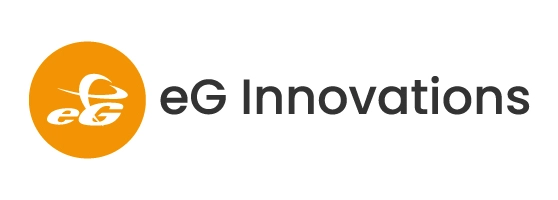 As an observability and monitoring platform already supporting over 500+ technologies, we already support most if not all of the components used in any “Supercloud” type implementations. We monitor on-prem, multi and hybrid cloud infrastructures already. Moreover, eG Enterprise itself is available as SaaS, deployed on Cloud or deployed on-prem and you can migrate your monitoring infrastructure and data as you please. I guess that makes us Super-Cloud ready!
As an observability and monitoring platform already supporting over 500+ technologies, we already support most if not all of the components used in any “Supercloud” type implementations. We monitor on-prem, multi and hybrid cloud infrastructures already. Moreover, eG Enterprise itself is available as SaaS, deployed on Cloud or deployed on-prem and you can migrate your monitoring infrastructure and data as you please. I guess that makes us Super-Cloud ready!
Footnote: Other historical usages of the term – “Supercloud”
Supercloud – public cloud giants
Supercloud has sometimes (particularly historically) been used to refer to a very big public cloud provider, one of the “big three” giants such as Microsoft Azure, Google GCP (Google Compute Platform), Amazon AWS (Amazon Web Services). As in “Google is a Supercloud”.
Recently, these types of clouds are more commonly referred to as “hyperscalers” or “hyperscale cloud”. The “big three” public clouds (AWS, Azure and GCP) are also sometimes referred to as “the primary cloud providers” particularly in the Americas and EMEA, in Asia there are other significant players such as Huawei Cloud and Alibaba Cloud whose market share in some countries rivals the “big three”.
eG Enterprise is an Observability solution for Modern IT. Monitor digital workspaces,
web applications, SaaS services, cloud and containers from a single pane of glass.
eG Enterprise is an Observability solution for Modern IT. Monitor digital workspaces,
web applications, SaaS services, cloud and containers from a single pane of glass.
Related Links
- Monitoring and Troubleshooting Multi-cloud Infrastructures
- How MSPs can Capitalize on the Rush to Localize IT Services (eginnovations.com)
- Cloud repatriation vs. multi-cloud: IT seeks cost relief | TechTarget
- On-premises, Cloud First or Cloud Repatriation – What’s the Trend? Which is Best?
- White Paper | Top 10 Requirements for Performance Monitoring of Cloud Applications and Infrastructures



 Rachel has worked as developer, product manager and marketing manager at Cloud, EUC, application and hardware vendors such as Citrix, IBM, NVIDIA and Siemens PLM. Rachel now works on technical content and engineering and partner liaison for eG Enterprise
Rachel has worked as developer, product manager and marketing manager at Cloud, EUC, application and hardware vendors such as Citrix, IBM, NVIDIA and Siemens PLM. Rachel now works on technical content and engineering and partner liaison for eG Enterprise 


